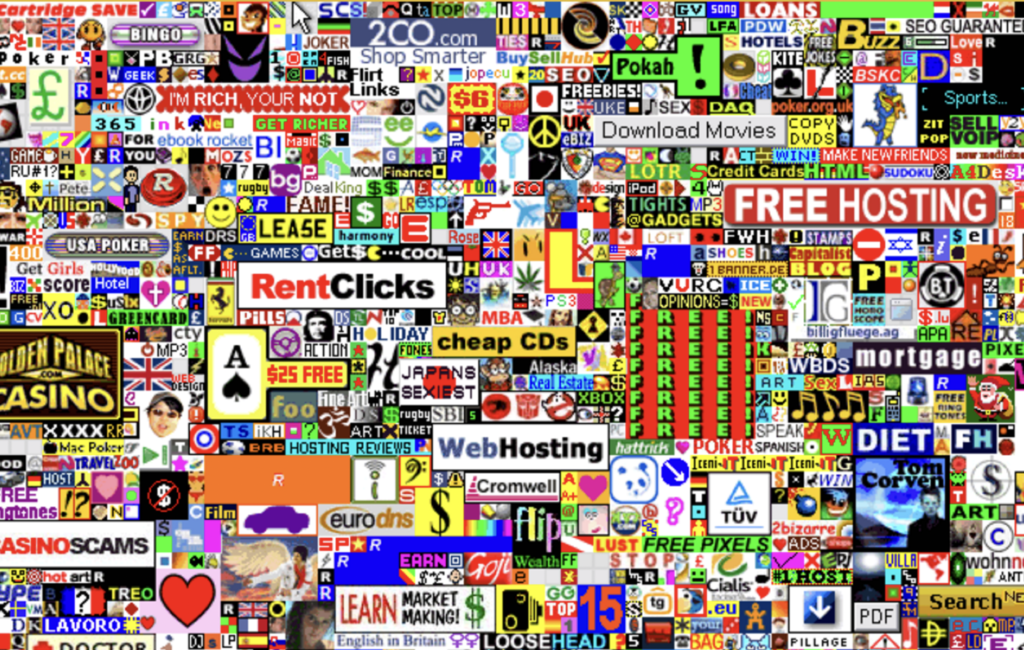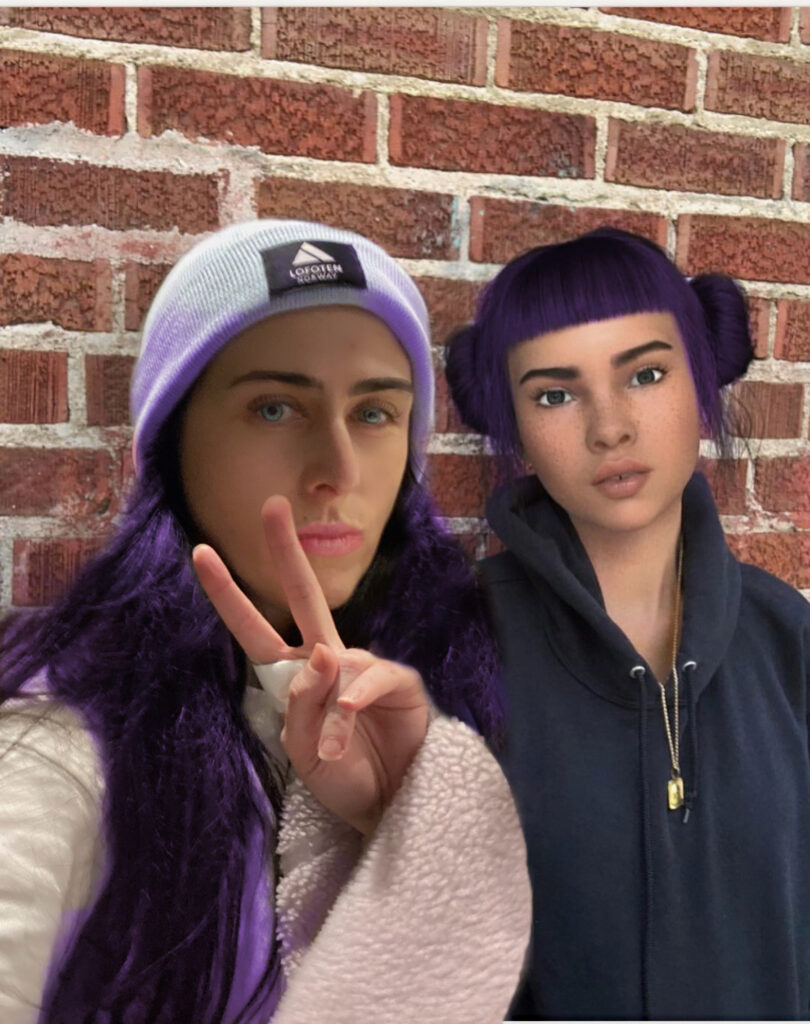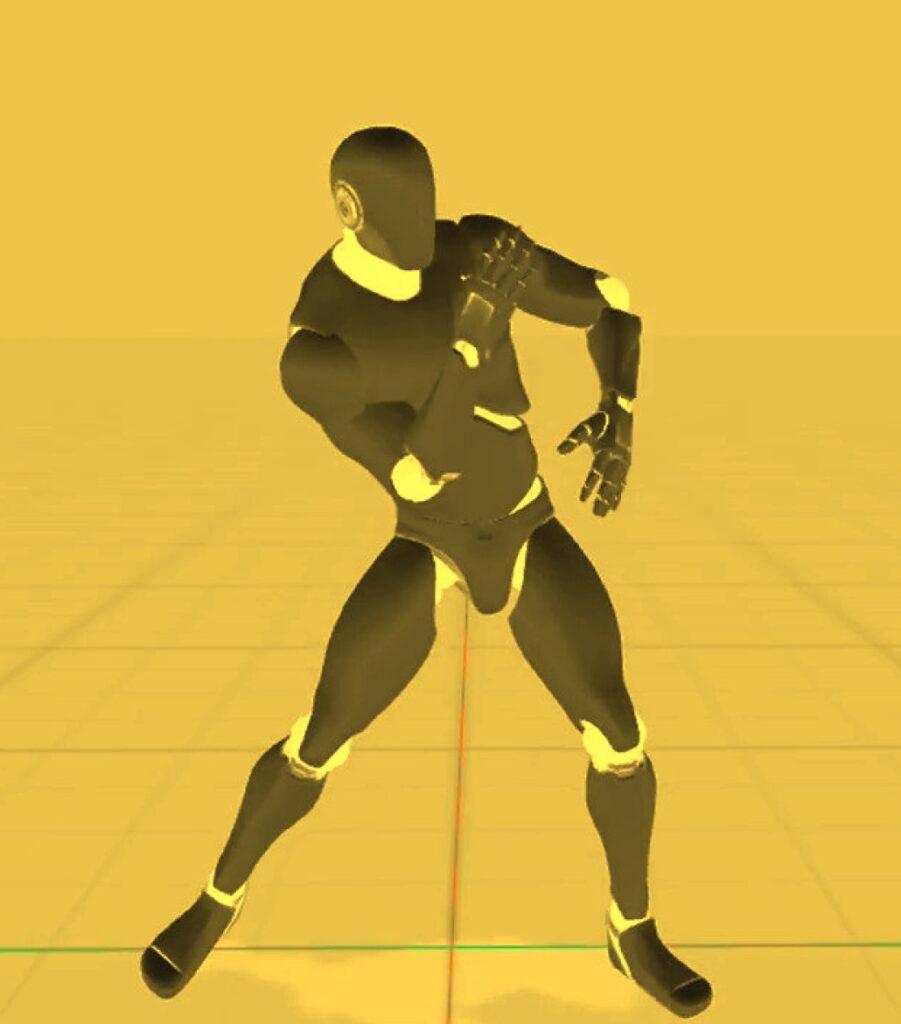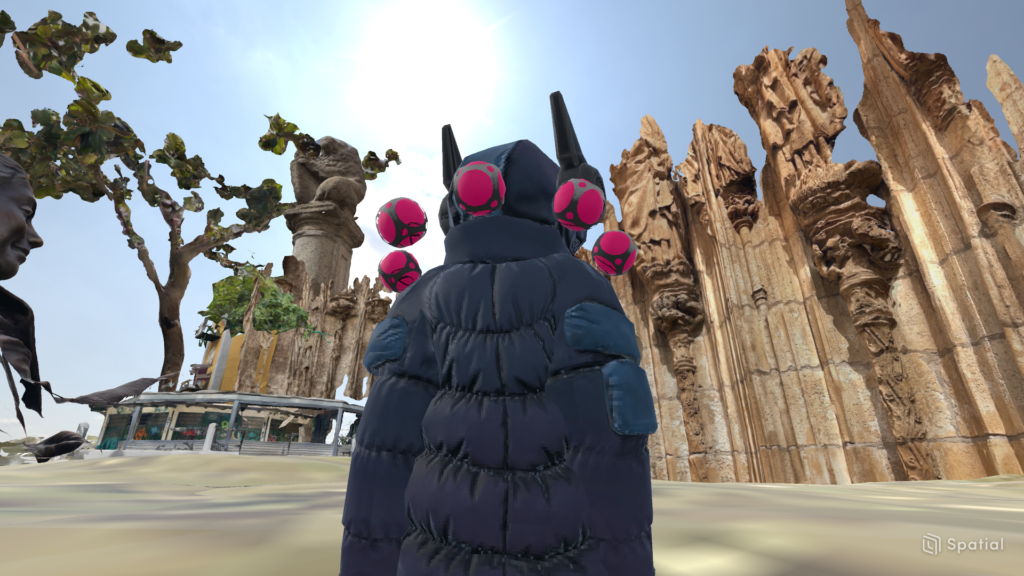Digital Residencies – 2023 Edition
Four winning projects were selected for the fourth edition of the Residenze Digitali call for proposals, a project conceived and promoted by the Artistic Residency Centre of Tuscany (Armunia – CapoTrave/Kilowatt), in partnership with the Marche Association for Theatrical Activities AMAT, the Artistic Residency Centre of Emilia-Romagna (L’arboreto – Teatro Dimora │ La Corte Ospitale), the ZONA K Association of Milan, and the Piemonte dal Vivo Foundation – Lavanderia a Vapore, joined this year by two other entities: C.U.R.A. – Centre for Artistic Residencies Umbria (La Mama Umbria Umbria International – Gestioni Cinematografiche e Teatrali/ZUT – Centro Teatrale Umbro – Micro Teatro Terra Marique – Indisciplinarte) and the Vicenza City Council Theatre Foundation.
The selected projects were: Il Teatropostaggio da un Milione di Dollari by MALTE & Collettivo ØNAR, Ai Love, Ghosts and Uncanny Valleys <3 by Mara Oscar Cassiani, Citizens by Simone Verduci, with choreographic concept consultancy and direction by Ariella Vidach, Humanverse by Martin Romeo.
The works were selected by a jury representing the 9 organising partners together with 3 tutors, scholars Laura Gemini, Anna Maria Monteverdi, Federica Patti.
Each artistic company received a contribution of 4000 euros + VAT and was supported in the project development and realisation by the partners and tutors. The outcome of the creative process was showcased in a multi-location festival, both live and online, that was held from November 21st to 26th 2023.
A digital artistic residency is an opportunity to study, experiment and create towards the realisation of works for a new digital space, with all the aesthetic, technical and relational implications that come with it. This is an opportunity that enriches the artists’ journey, offering new perspectives to organisers, cultural operators, and the viewers themselves.
“Residenze Digitali has now become a bridge between theatre, dance and online creativity. It is still a fragile bridge, not at all supported by institutions and faced with scepticism from a large part of the theatre world, but the network of partners is not giving up and – on the contrary – grows stronger every year by pursuing an artistic offer that we think deserves the credit of having launched new creative avenues, without diminishing pre-existent contexts, rather expanding the current possibilities for the artists’ benefit”.
Lucia Franchi and Luca Ricci, coordinators of Residenze Digitali together with Armunia
Selected Projects

MALTE & ØNAR Collective
IL TEATROPOSTAGGIO DA UN MILIONE DI DOLLARI
Shitposting is the sharing of cheap or out-of-context content in chats or social networks, with the aim of derailing the conversation. Such content can often be traced back to the memetic sphere, i.e. assortments of images, videos and texts: a dialectic between image and writing similar to the one between stage and word.
But what happens if shitposting is used to “crash” dramaturgical paradigms?
Giacomo Lilliù (performance, concept and curatorship) and Pier Lorenzo Pisano (dramaturgical curatorship) have selected 5 of the most popular meme creators based on their ability to combine immediacy and complexity.
Since 2023, the group has been meeting monthly with the goal of familiarising the selected creators with the theatrical sphere, and composing texts to be handed over to four professional actors in artistic residence. The process is carried out both in a physical theatre space, with showcases open to the public, and virtually, with improvised sessions in which the memers initiate creative writing threads enriched by the comments of their communities; during these sessions, the actors will interact via keyboard, stories or reels, seeking a performance mode specific to the social media being used. The materials collected during the project will be shared on a designated web page: a composition inspired by the Million Dollar Homepage, an advertisement mosaic and a true relic of Internet history. The site, previewable during the Digital Residencies Week, will display texts, videos, memes, essays and interviews – an archive of this first incursion into a still largely unknown territory.
The MALTE Cultural Association was created in Imola in 2006. Since 2009 it has moved to the Marche region, where it has organised festivals, productions (site-specific and not), projects and workshops. Recent projects include: Cronache del bambino anatra by Sonia Antinori, with Maria Ariis and Carla Manzon, directed by Gigi Dall’Aglio, and Nella giungla delle città. L’irruzione del reale , winner of the MiBACT MigrArti Spettacolo 2018 callout, a work with migrants and immigrants inspired by the homonymous text by Brecht. Collettivo ØNAR is an informal group created in 2015 by nine artists from different fields, all born in the early 1990s. The collective acts as an independent fringe within the activities of MALTE, through a research articulated between theatre performances, film and video-art productions, musical projects, figurative arts and online technologies.
Credits
concept and performance curatorship Giacomo Lilliù
dramaturgical curatorship Pier Lorenzo Pisano
with creators Giulio Armeni, Davide Palandri, Sexy Tiles, Daniele Zinni, Loren Zonardo
and actors Federica Dordei, Lorenzo Guerrieri, Arianna Primavera, Daniele Turconi
with the support of Fondo 2022 and Inteatro Residenze
under the patronage of the CIRCe (Interdisciplinary Center for Communication Research) of the University of Turin
executive production MALTE

MARA OSCAR CASSIANI
AI LOVE, GHOSTS AND UNCANNY VALLEYS <3
Can we fall in love with an A.I. (artificial intelligence) and then decide to break up with it? Virtual friends are avatars with Instagram profiles giving us advice – A.I.s that become partners in our love life. In many ways, it seems like the perfect relationship: one can always rely on an A.I. partner who is always willing to provide companionship and understanding. As more and more real relationships vanish in the grip of ghosting (the disappearance of someone without explanation), relationships with A.I. grow. Bodies, often appearing semi-conscious with a device in hand, live a real emotional second life on social media and A.I. platforms. A.I.s fill in the void inside humans by infusing them with what Gilbert Ryle, in 1949, called the Ghost – the soul in the machine. Yet, this mechanism of extreme humanisation becomes abnormal: the more the A.I. resembles humans, the more upset users get (the Uncanny Valley effect). The process of the project oscillates between YouTube storytelling and augmented reality moments. The aim is to narrate and give a performative demonstration of the relationship between Artificial intelligence, in the form of virtual avatars and users, and the impact on our physical presence and behaviour as we use devices to communicate.
Mara Oscar Cassiani is a wifi-based artist working in the fields of performance, choreography, digital languages and ritual clubbing, which she explores through live performance practices, both offline and online. Her research is focused on the creation of a contemporary iconography where new grammars and rituals are borrowed from the internet world, from subcultures, from avatars and from brutal capitalism imagery. The relationship she entertains with her extended audience – both live and mediated – is explored through these visual imageries in the form of installations performed in open space venues or in virtual open source spaces. The resulting performance becomes a flow of images, a continuous scroll through extracts of avatar culture, ritual and digital folklore, and re-appropriation of capitalist language. The artist thus gives us a global snapshot, a “visual fast food” between kitsch, crude rituality, and apocalypse.
Credits
by Mara Oscar Cassiani
A.I. performers, Avatars, Users in relations with A.I., Mara Oscar Cassiani (MOC)
dialogues MOC + A.I.
texts MOC + A.I.
technical assistants Matteo Ascani

SIMONE VERDUCI / ARIELLA VIDACH
CITIZENS
Citizens is a virtual participatory performance project that retraces the definition of heterotopia by the philosopher Michel Foucault, intended to indicate spaces that are connected to all other spaces, but in a way that suspends, neutralises or inverts that same set of relationships that they define, reflect or mirror. In this sense, the project aims to redefine, through photogrammetry and rendering techniques, the cities we inhabit, thus offering bodies the possibility of modifying the economic and sociological relations that rule them.
Movement becomes the engine of this intersection. The virtual environment created is set up by superimposing in a single location several apparently incompatible places (a prison, a mosque, a garden, a station, a boat, a museum), within which the user can place oneself and navigate. Thanks to Plask, an application that transforms moving bodies into avatars, the user will be able to inhabit these new spaces that have been virtually reconfigured through UNITY, thus making a personal contribution to the installation.
Simone Verduci is a creative technologist and new media artist. His research focuses on the development and employment of new technologies for art and design, paying particular attention to contemporary and multidisciplinary work.
Ariella Vidach trained in New York in the 1980s, where she was able to expand her practice with the leading figures of American postmodern dance. She returned to Milan in 1990 and founded, in 1996, the Ariella Vidach – AiEP dance company, producing multimedia performances that combine choreographic research with an interest in the relationship between body and technology. In 2017 AiEP received the prestigious ‘Special Award’ in the Swiss Dance Awards for research and language innovation.
Credits
concept and interactive VR design Simone Verduci
modelling, animation and interactive VR environment programming Simone Assi
sound design in VR Franco Conte
interactive VR choreography Sofia Casprini
tutor for choreographic concept and direction Ariella Vidach
tutor for interactive VR concept design and direction Claudio Prati

MARTIN ROMEO
HUMANVERSE
A post-human research that considers all the actors as part of an ecosystem, featuring physical, non-physical, digital, virtual and phygital elements. The metaverse is part of this new world-ecosystem that we find ourselves having to interface with, in view of the birth of a new ‘civilisation’.
The Humanverse leads us to reflect on the anthropological investigation of the body, in a reality where contrasting worlds exist – worlds made up of new alliances between different species and inhabited by permeable, hybrid and multiple beings, like the fantastic creatures invented by Carrington.
What should we do with our matter when everything is increasingly immersive? In a world more and more inclined to immersivity, what priorities should be set?
The exploration of these issues will give rise to audiovisual works generated with AI platforms (MidJourney, OpenAI, ChatGPT) that will be presented to inspire dialogues and exchanges. The viewer will be able to access this site either from a computer or smartphone via an avatar, and will be able to interact physically through Quest 2 visors that will be made available during the public presentations. They will be able to participate in the experience in real time, live within this ecosystem, and evolve it.
Martin Romeo is an Italian-Argentine artist investigating the relationship between nature and technology through the use of different media, focusing in particular on the creation of dynamic sculptures, VR performances and multimedia installations. Through his research, he reads and perceives the world intimately; his production can be divided into “tangible” and “intangible”, where tangible works intend to give form to data, while intangible works retransmit data in form of experience.
He has participated in international exhibitions both as an artist and as a designer, the most important collaborations including the Astana Expo in 2017 and the Venice Pavilion of the 2018 Venice Biennale. He has participated in several international residencies, such as the Swatch Residency in Shanghai and the Inside-Out Art Museum in Beijing.
Martin has collaborated with companies on the design of new Web3 ecosystems, including Bulgari, Apple and Red-Eye Magazine. His research was supported by Italian Council, the 2022-23 call by the Italian Ministry of Culture, and is part of the “Quadriennale di Roma – Arte Italiana 365°” collection. In addition, he was selected as a reference artist at the Italian Design Pavilion in Hong Kong and is an artist of the Uffizi Gallery’s Uffizi Diffusi. Martin is the coordinator of the Master in Visual Arts for the Digital Age at the IED University in Milan and lecturer at the NABA University in Milan. He is represented by the Reasoned Art digital gallery.

